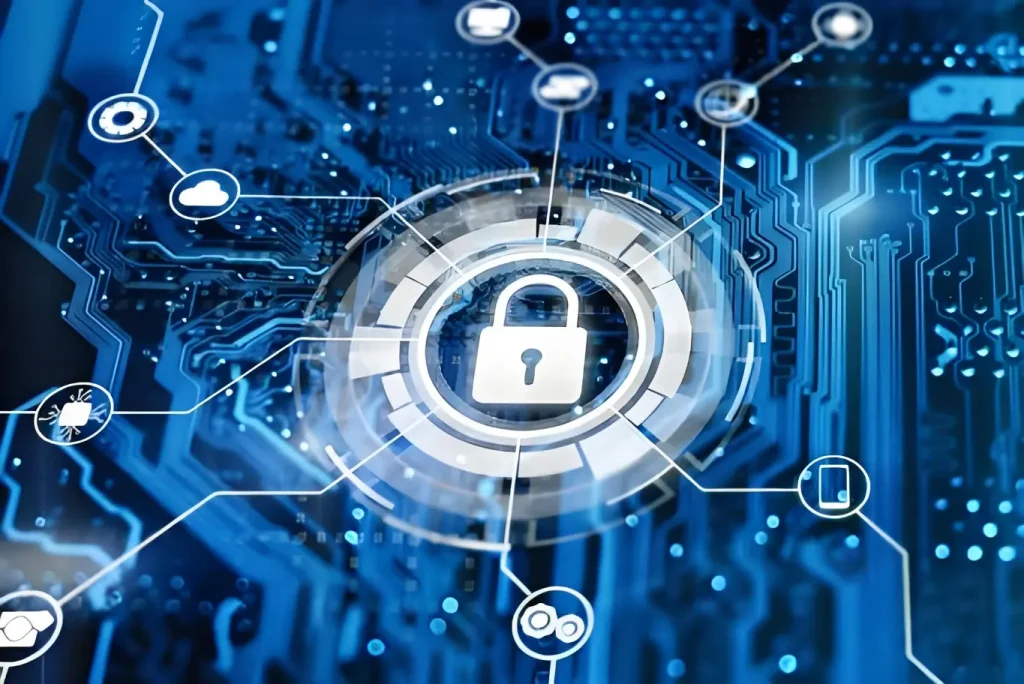- Enterprise cybersecurity is the implementation of practices and principles that protect company data and resources from cyber threats.
- Enterprise cybersecurity involves preventing and mitigating damage caused by cyberattacks such as ransomware attacks, social engineering, data breaches, and software vulnerabilities.
- According to Verizon’s 2023 Data Breach Investigations Report, 74% of all data breaches involve human interaction.
Enterprise cybersecurity refers to the practice of protecting large organisations, including corporations, government agencies, and other entities, from cyber threats and attacks.
It involves a comprehensive approach to safeguarding an organisation’s network, systems, data, and other digital assets from unauthorised access, use, disclosure, disruption, modification, or destruction.
This blog will go into detail about what enterprise cybersecurity is by describing several key aspects.
This blog will highlight a few key aspects of corporate cybersecurity and the consequences of a corporate cybersecurity breach.
Why enterprise cybersecurity matters?
The stakes of cybersecurity in the enterprise are high, with potential consequences ranging from financial loss and reputational damage to legal and regulatory repercussions. Here’s why it matters.
1. Protecting assets: enterprises house vast amounts of sensitive data, proprietary information, and intellectual property that are critical to their operations and competitive advantage. Cybersecurity safeguards these assets from theft, manipulation, or destruction.
2. Maintaining trust: trust is the foundation of any successful business relationship. A breach of trust due to a cybersecurity incident can erode customer confidence, damage brand reputation, and lead to loss of business.
3. Compliance and legal obligations: enterprises are subject to various laws, regulations, and industry standards governing data protection and privacy. Compliance with these requirements is not only a legal obligation but also essential for maintaining trust and avoiding penalties.
4. Ensuring business continuity: cyberattacks can disrupt normal business operations, leading to downtime, productivity losses, and financial repercussions. A robust cybersecurity posture helps ensure business continuity and resilience in the face of disruptions.

Key aspects of enterprise cybersecurity
1. Risk management: identifying, assessing, and prioritising potential cybersecurity risks to the organisation’s assets, operations, and reputation.
2. Security policies and procedures: developing and enforcing security policies, standards, guidelines, and procedures to govern the use and protection of information technology resources.
3. Access control: implementing measures to authenticate and authorise users, devices, and applications to access the organisation’s network and data, including the use of strong passwords, multi-factor authentication (MFA), and role-based access control (RBAC).
4. Network security: deploying technologies and strategies to secure the organisation’s network infrastructure, such as firewalls, intrusion detection and prevention systems (IDPS), virtual private networks (VPNs), and network segmentation.
5. Endpoint security: protecting individual devices, including computers, smartphones, and tablets, from malware, ransomware, and other cyber threats through the use of antivirus software, endpoint detection and response (EDR) solutions, and device encryption.
6. Data protection: implementing measures to safeguard sensitive data through encryption, data loss prevention (DLP) solutions, access controls, and regular data backups.
7. Incident response: establishing procedures and protocols for detecting, responding to, and recovering from cybersecurity incidents, such as data breaches, malware infections, and denial-of-service (DoS) attacks.
8. Security awareness training: educating employees and stakeholders about cybersecurity best practices, including how to recognise and report suspicious activities, phishing emails, and social engineering attempts.
9. Compliance and regulation: ensuring compliance with relevant laws, regulations, and industry standards governing data protection and cybersecurity, such as the General Data Protection Regulation (GDPR), the Health Insurance Portability and Accountability Act (HIPAA), and the Payment Card Industry Data Security Standard (PCI DSS).
10. Continuous monitoring and improvement: implementing tools and processes for continuously monitoring the organisation’s security posture, identifying vulnerabilities and weaknesses, and making necessary improvements to enhance overall cybersecurity resilience.
Also read: How can generative AI be used in cybersecurity?
Consequences of corporate network security breaches
According to Verizon’s 2023 Data Breach Investigations Report, 74% of all data breaches involve human interaction. A lack of security measures can lead to an increased attack surface and cyber threats, impacting various aspects of the organization.
Here are some potential consequences.
1. Financial loss: security breaches can result in direct financial losses due to theft of funds, fraudulent transactions, or extortion demands. Additionally, organisations may incur costs associated with investigating the breach, restoring systems, and compensating affected parties.
2. Reputational damage: breaches can damage the organisation’s reputation and erode customer trust. News of a security incident can lead to negative publicity, loss of customers, and difficulty attracting new business.
3. Legal and regulatory consequences: organisations may face legal and regulatory consequences for failing to protect sensitive data. This can include fines, lawsuits, and regulatory sanctions for non-compliance with laws such as GDPR, HIPAA, or PCI DSS.
4. Data loss or theft: breaches can result in the loss or theft of sensitive data, including customer information, intellectual property, and financial records. This can have long-term consequences for the organisation, including loss of competitive advantage and exposure to identity theft and fraud.
5. Operational disruption: security breaches can disrupt normal business operations, causing downtime, productivity losses, and delays in service delivery. In some cases, organisations may be unable to operate effectively until the breach is fully addressed and systems are restored.
6. Damage to intellectual property: breaches can result in the theft or compromise of valuable intellectual property, such as trade secrets, patents, and proprietary technology. This can undermine the organisation’s competitive position and lead to a loss of market share.
7. Damage to employee morale: security breaches can harm employee morale and job satisfaction. Employees may feel demoralised or anxious about the security of their personal information and may lose trust in the organisation’s ability to protect sensitive data.
8. Cybersecurity insurance premium increases: following a security breach, organisations may face higher premiums or difficulty obtaining cybersecurity insurance coverage, which can further increase the financial impact of the incident.
9. Supply chain disruption: breaches affecting suppliers or partners can have ripple effects throughout the supply chain, disrupting operations and causing delays in product delivery or service provision.
10. Long-term business impact: the effects of a security breach can extend far beyond the immediate aftermath, affecting the organisation’s long-term viability, growth prospects, and strategic objectives. Rebuilding trust and recovering from the reputational damage may take years and significant resources.









